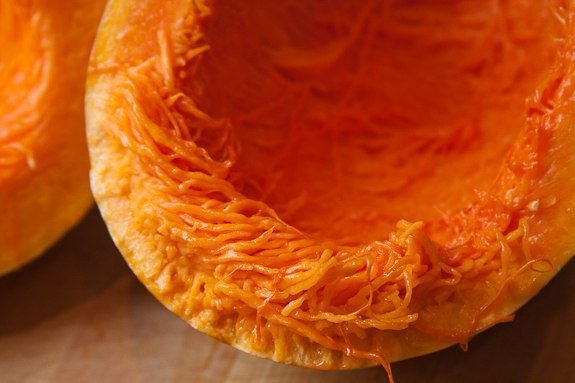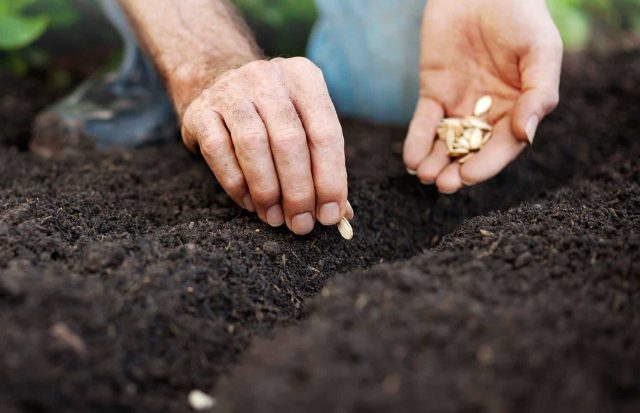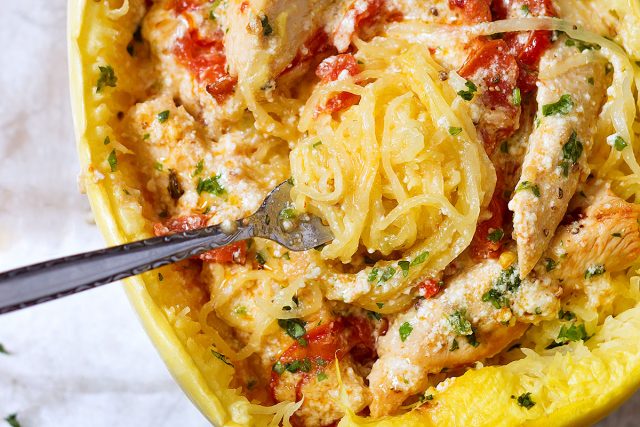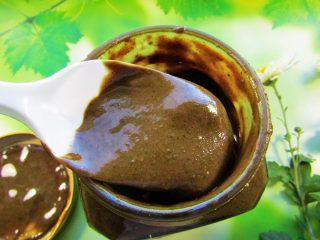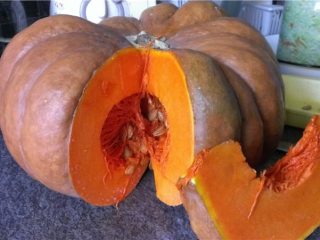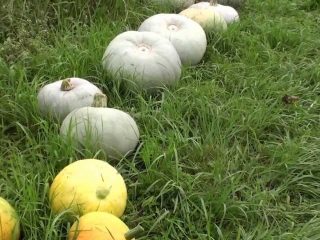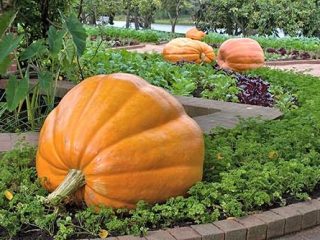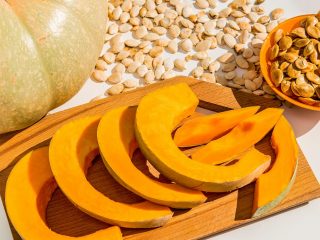Content
Spaghetti pumpkin or pasta is famous for its unusual softness and taste. The crop can be grown in open ground or under film cover throughout Russia.
Description of Spaghetti Pumpkin
Spaghetti pumpkin is a new crop that has already gained popularity. This is an early ripening hybrid of zucchini and pumpkin. It requires a lot of space for normal growth and development. The lashes grow up to 4.5 m. They are hollow inside and covered with hard hairs on the outside.
The leaves are large, palmate, green, and outwardly no different from ordinary pumpkin tops. The flowering of the crop continues from early summer until autumn. In the Central region it lasts from June to October. The fruit sets well. From emergence to full ripeness, they need no more than 60 days.
Description of fruits
Spaghetti squash fruits can be oval, elongated or round in shape. Peel color ranges from light yellow to darker. It depends on the plant variety.
After flowering, one bush bears up to 10 fruits. Their average weight reaches 4 kg. The pulp of Spaghetti pumpkin is bright orange, medium density, smells pleasantly of vanilla, fibrous.After cooking, it breaks up into strips and resembles vermicelli. Spaghetti squash tastes sweet, much sweeter than regular varieties.
Ripe vegetables can be stored for no more than 1-2 months in a cool room, where they do not lose their quality. For longer storage, choose Spaghetti pumpkin that has been well dried in the sun, without cracks or signs of spoilage on the skin. The room should be well ventilated, the optimal temperature is from +3... +10 °C.
In cooking, Spaghetti squash is used to prepare caviar and other delicious dishes. It is baked, fried, boiled, canned. The fresh pulp remaining after cooking is stored in the refrigerator for about a week.
Characteristics of the variety
Spaghetti pumpkin does not tolerate temperature changes and cold snaps, so in the middle zone it is grown under film. In the southern part of Russia it is successfully cultivated in open ground. However, it is worth considering that pumpkin does not grow well in dry and heavy soils. For normal fruiting she needs good nutrition.
Resistance to pests and diseases
Spaghetti squash is susceptible to diseases characteristic of this family:
- anthracnose;
- fusarium;
- brown spot;
- powdery mildew;
- yellow mosaic virus.
Pests that plague the crop are mites and aphids. To prevent this from happening, macaroni squash should not be planted in the same place every year. Favorable predecessor crops for pumpkin are onions, potatoes, most root vegetables, legumes, and greens. You cannot plant the plant after squash, zucchini or cucumbers. The plant can be returned to its original location after 5 years.
Advantages and disadvantages
From the description of Spaghetti pumpkin we can conclude that the culture has many positive characteristics:
- early harvest;
- excellent taste of the pulp and its unusual structure;
- good preservation of fruits;
- high yield per bush.
But in addition to these advantages, the plant has a number of disadvantages that cannot be kept silent about. Spaghetti pumpkin is susceptible to diseases, which negatively affects yield. It grows poorly in arid regions and practically does not tolerate cold weather. In addition, the plant is demanding regarding the composition of the soil and fertilizing.
Growing Spaghetti Squash
Spaghetti pumpkin does not tolerate temperatures dropping to 0 °C, so in regions with an unstable climate it is better to grow it in seedlings.
Seeds for seedlings are sown from mid-April to May. Growing seedlings requires special knowledge. The seeds are planted in separate containers; it is better to use peat pots. The Spaghetti variety does not tolerate transplanting and picking well, so you need to do without it. Soil for seedlings is used from a universal store-bought soil or home-made soil. To do this, mix peat, humus and sawdust in a ratio of 2:1:1. Add 1 tsp to the resulting mixture. mineral fertilizers (per 1 kg of soil).
Friendly pumpkin shoots can be obtained in conditions of good light and warmth. The temperature required for seed germination ranges from +15... +25 °C.
Spaghetti squash seedlings need to be well cared for. Watering should be moderate, otherwise the seedlings will get sick. The soil is moistened as needed and is not allowed to dry out. A week later, the sprouts are fed for the first time. Use complex mineral fertilizers or mullein infusion.14 days before transplanting to a permanent place, the seedlings are accustomed to the environment. The age of seedlings ready for transplantation is 1.5 months.
Spaghetti pumpkin is planted directly into the ground no earlier than May 15th, by which time the soil will have warmed up sufficiently. The planting location is chosen to be warm and sunny, well protected from cold winds and drafts. Grows well in moisture-intensive and fertile soils. Heavy, swampy or clayey soil is not suitable for growing Spaghetti. Before planting, dig up the bed and add manure, humus or peat.
Experienced gardeners practice planting pumpkins on black mulch material, which reduces the number of weed, prevents contact of the vegetable with the soil, protects it from diseases and pests.
Caring for pumpkins in the ground
The yield and health of the bush depends on further care of the Spaghetti pumpkin. If you water too much, the roots of the plant are exposed and a fungal disease begins. For normal development, it is enough to water the bed well 2 times a week. If it is very hot, the soil should be moistened every two days.
Experienced gardeners advise pinching the spaghetti squash vines so that it produces a good harvest. If this is not done, the shoots will grow up to 7 m, but there will be few fruits. To properly form a bush, you need to leave 4 side shoots and remove the rest. Pinch each shoot after the 6th leaf.
Spaghetti pumpkin responds well to fertilizing, so 10-14 days after transplanting it needs to be fertilized. For these purposes, it is better to use chicken manure, which is diluted in proportions of 1:4 with water. Feed at intervals of 2 weeks.You can alternate chicken droppings with an infusion of ash, superphosphate or urea.
It is very important for pumpkins to loosen the soil so that oxygen reaches the roots. Weeds must be removed immediately while they are small. Loosen the soil shallowly so as not to damage the roots.
How to cook spaghetti squash
Spaghetti pumpkin is loved by housewives and has found its application in the kitchen. There are many recipes for its preparation; you can deliciously boil or bake the fruit. It is well suited for feeding young children and for normalizing the digestive and cardiovascular systems.
One of my favorite recipes is baked spaghetti pumpkin stuffed with chicken. The dish turns out tasty, satisfying, and contains a lot of cheese.
Ingredients:
- pumpkin – 1 pc.;
- chicken fillet – 1 pc.;
- cheese – 250 g;
- bell pepper – 2 pcs.;
- sour cream – 50 g;
- tomato sauce – 2 tbsp. l.;
- greens – 1 bunch;
- salt and spices - to taste.
Cooking process:
- Before cooking, grate the cheese on a coarse grater, boil the chicken and separate it into fibers.
- Cut the vegetable, remove the seeds, grease the inside and outside with oil. Bake the vegetable in the oven until cooked at 200°C (about 35 minutes).
- Cool the finished pumpkin and carefully separate the spaghetti fibers so as not to damage the skin.
- To prepare the filling, mix pumpkin pulp with boiled chicken, chopped bell pepper and spices. Add sour cream and tomato sauce.
- Fill the pumpkin halves with filling, sprinkle with grated cheese and herbs. Bake the dish in the oven for about 20 minutes. at a temperature of 220 °C.
Cut the finished pumpkin into portions and serve.
No less interesting is the recipe for Spaghetti pumpkin with bacon. It will require:
- pumpkin – 1 pc.;
- bacon - 4 plates;
- onions – 1 pc.;
- garlic – 1 clove;
- hard cheese – 250 g;
- greens - to taste;
- salt and spices - to taste;
- vegetable oil – 1 tbsp. l.
How to cook:
- Cut the vegetable in half, remove the seeds, add salt and pepper to taste. Grease with vegetable oil on both sides.
- Bake the pumpkin halves in the oven at 200°C (about 40 minutes).
- Chop the onion and mix with crushed garlic. Cut the bacon into small slices.
- Place bacon in a hot frying pan, fry until golden brown, then add onion and garlic, sauté for another 5 minutes.
- Cool the finished pumpkin halves, scoop out the pulp with a fork, and mix it with the bacon. Fry for 2 minutes.
- Sprinkle the dish with grated cheese and mix well. Fry until the cheese melts. Decorate the dish with herbs.
This dish turns out to be satisfying and healthy. Its taste is extraordinary.
You can also make delicious lasagna from Spaghetti pumpkin. The dish turns out to be not as high in calories as usual, and very tasty.
Ingredients:
- pumpkin – 1 pc.;
- onions – 1 pc.;
- garlic – 4 cloves;
- chicken fillet – 2 pcs.;
- cheese – 450 g;
- egg – 1 pc.;
- favorite sauce – 2.5 tbsp;
- greens - to taste.
Step-by-step cooking recipe:
- Cut the fruit, remove the seeds, grease with oil. Bake the vegetable in the oven until tender – about 40 minutes.
- Finely chop the onion, sauté for 5 minutes, add finely chopped garlic, fry for another 2 minutes.
- Cut the chicken into cubes and fry with onions until half cooked. Sprinkle the filling with salt and spices to taste.
- Beat the egg with grated cheese and mix well. Combine with filling.
- Grease a baking dish with butter and sauce. Spread some of the pumpkin pulp, then a layer of filling. Alternate layers, pour sauce over the last layer and sprinkle with remaining grated cheese.
- Bake lasagna in the oven until a cheese crust forms.This will take about 35 minutes, then turn off the oven and leave the dish for 10 minutes. for cooling.
Garnish the finished lasagna with fresh herbs and chopped basil.
Conclusion
Spaghetti pumpkin is very healthy and easy to grow. In order for the crop to bear fruit well, it is enough to form the bush correctly, water the plant on time and feed it. The ripe vegetable is distinguished by fibrous pulp, which can be prepared very tasty using recipes from the piggy bank.
